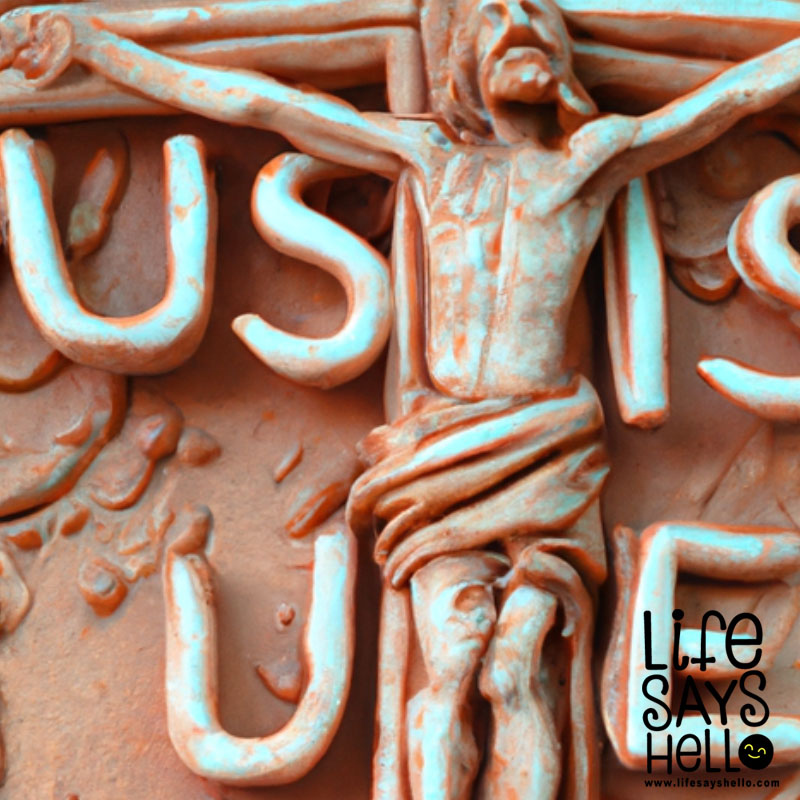The Ultimate Guide to How Jesus Died: Crucifixion, Significance, and Resurrection

Opening Sentence: Dive deep into the gripping story of Jesus's death, its profound significance in Christianity, and the miraculous resurrection that followed, as we unravel the mystery behind the most influential event in human history.
Jesus Christ, the central figure of Christianity, is believed to be the Son of God who came to earth to save humanity from sin. His life, teachings, and ultimate sacrifice on the cross have inspired billions of people worldwide and shaped the course of history. Understanding the circumstances surrounding Jesus's death is crucial to grasp the core of Christian beliefs and appreciate the profound impact of his sacrifice.
In this comprehensive guide, we will explore the events leading to Jesus's death, the crucifixion process, the theological significance of his sacrifice, and the miraculous resurrection that followed. So, let's embark on this journey to unravel the mystery of how Jesus died and its importance in Christianity.
Events Leading to Jesus's Death
The Last Supper
The Last Supper was the final meal Jesus shared with his disciples before his crucifixion. According to the Bible, during this meal, Jesus predicted his betrayal by one of his disciples and instituted the Eucharist, a Christian sacrament symbolizing his body and blood. The Last Supper is a significant event in Christianity, as it marked the beginning of the end of Jesus's earthly life.
Jesus's Betrayal by Judas
Judas Iscariot, one of Jesus's twelve disciples, betrayed him to the religious authorities for thirty pieces of silver. This betrayal set the stage for Jesus's arrest and subsequent crucifixion. The motives behind Judas's betrayal have been widely debated, with some scholars suggesting greed, disillusionment, or even a misguided attempt to force Jesus to assert his divine power.
Jesus's Arrest in the Garden of Gethsemane
Following the Last Supper, Jesus and his disciples went to the Garden of Gethsemane, where Jesus prayed in deep anguish, knowing the events that were about to unfold. It was here that Judas led a group of armed men to arrest Jesus, identifying him with a kiss. Jesus was then taken into custody by the religious authorities, setting the stage for his trial and crucifixion.
The Trial before the Sanhedrin and Pontius Pilate
Jesus was first brought before the Sanhedrin, the Jewish high council, where he was accused of blasphemy for claiming to be the Son of God. The Sanhedrin found Jesus guilty and sought permission from the Roman governor, Pontius Pilate, to execute him. Pilate, initially reluctant to condemn Jesus, eventually yielded to the pressure from the religious leaders and the crowd, sentencing Jesus to be crucified.
Crucifixion: The Method of Jesus's Death
Historical Context of Crucifixion as a Form of Capital Punishment
Crucifixion was a brutal and humiliating form of capital punishment used by the Romans to execute criminals, rebels, and enemies of the state. It was designed to inflict maximum pain and suffering while serving as a public deterrent for potential wrongdoers. The crucifixion of Jesus was not an isolated incident; thousands of people were crucified by the Romans during their rule.
The Process of Crucifixion and Its Physical Effects on the Body
Crucifixion involved nailing the victim's hands and feet to a wooden cross and leaving them to hang until they died, usually from asphyxiation or a combination of shock and exhaustion. The process could take hours or even days, depending on the individual's physical condition and the severity of the injuries sustained during the crucifixion.
The physical effects of crucifixion were excruciating, including intense pain, dehydration, blood loss, and difficulty breathing. As the victim hung on the cross, their lungs would gradually fill with fluid, making it increasingly difficult to breathe and eventually leading to death.
The Specific Details of Jesus's Crucifixion
According to the Gospels, Jesus was forced to carry his cross to the site of his crucifixion, known as Golgotha or "the place of the skull." Along the way, he was beaten, mocked, and spat upon by the Roman soldiers and the crowd. A crown of thorns was placed on his head, causing further pain and blood loss.
Jesus was crucified between two thieves, fulfilling the prophecy that he would be "numbered with the transgressors" (Isaiah 53:12). Above his head was an inscription that read "Jesus of Nazareth, the King of the Jews," written in Hebrew, Greek, and Latin.
Theological Significance of Jesus's Death
The Concept of Jesus as the Sacrificial Lamb of God
In Christian theology, Jesus's death is seen as a sacrificial offering to atone for the sins of humanity. This concept is rooted in the Jewish tradition of animal sacrifices, where the blood of a spotless lamb was shed to cleanse the people of their sins. Jesus, referred to as the "Lamb of God" in the New Testament, is believed to have taken upon himself the sins of the world, offering his life as the ultimate and perfect sacrifice.
The Fulfillment of Old Testament Prophecies
The death of Jesus fulfilled numerous Old Testament prophecies, including those found in Isaiah 53 and Psalm 22. These passages, written centuries before Jesus's birth, describe the suffering and death of a righteous servant who would bear the sins of the people and bring salvation to the world. Christians believe that Jesus's crucifixion fulfilled these prophecies, demonstrating his divine nature and mission.
The Role of Jesus's Death in Establishing the New Covenant and Providing Salvation for Humanity
The crucifixion of Jesus marked the establishment of a new covenant between God and humanity, replacing the old covenant based on the Mosaic Law. Under the new covenant, salvation is made possible through faith in Jesus Christ and his atoning sacrifice, rather than adherence to the Law. Jesus's death and resurrection opened the door for all people, regardless of their ethnicity or background, to receive forgiveness and eternal life through faith in him.
The Resurrection: A Pivotal Event in Christianity
The Discovery of the Empty Tomb
Three days after Jesus's crucifixion, a group of women, including Mary Magdalene, went to his tomb to anoint his body with spices. Upon arrival, they discovered that the stone covering the entrance had been rolled away, and the tomb was empty. An angel appeared to them, announcing that Jesus had risen from the dead, as he had promised.
Jesus's Post-Resurrection Appearances to His Disciples and Others
Following his resurrection, Jesus appeared to his disciples and others on multiple occasions. These appearances included his encounter with Mary Magdalene in the garden, his appearance to the disciples in the upper room, and his conversation with two followers on the road to Emmaus. These post-resurrection appearances provided undeniable evidence of Jesus's victory over death and solidified the faith of his followers.
The Significance of the Resurrection in Christian Belief and Its Connection to Jesus's Death
The resurrection of Jesus is a central tenet of Christianity, as it confirms his divine nature and validates his teachings. It also demonstrates the power of God to conquer death and offers hope for eternal life to those who believe in Jesus. The resurrection is intrinsically connected to Jesus's death, as it completes the narrative of his sacrificial mission and establishes the foundation for the Christian faith.
Conclusion
The death and resurrection of Jesus Christ are the cornerstone of Christianity, shaping the beliefs, practices, and hope of billions of followers throughout history. By understanding the historical and theological context surrounding Jesus's crucifixion, we can appreciate its profound significance in the Christian faith and the transformative power it holds for those who believe in him. As we reflect on the events of Jesus's death and resurrection, we are reminded of the depth of God's love for humanity and the promise of eternal life offered through faith in Jesus Christ.




Comments